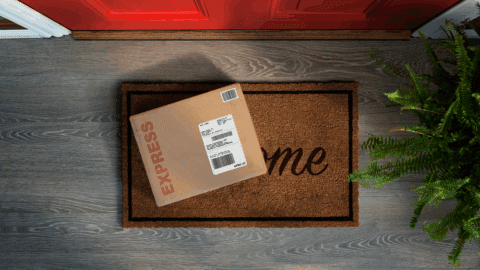Editor’s note: As retail interfaces and systems continue to evolve, the way we design retail experiences to user needs and behaviors is also transforming. In the new series “Stimulating Retail,” join award-winning sensory designer and Harvard neuroscientist Ari Peralta as he breaks down the science and tech behind some of today’s most stimulating sensory retail experiences. From 3D billboards to spatial scent to ChatGPT, meet the brands leading the next wave of multisensory retail innovations, and learn best practices to help strengthen your brand’s sensory presence in this new, multi-dimensional experience market. Read part one here and part two here.
There’s plenty to explore when it comes to elevating the visual delights of retail spaces. But sound is often under appreciated when it comes to the crucial role it can play in delivering an immersive customer experience in retail.
It’s also an area where many retailers could stand to improve their design strategy by employing better acoustics, empowering more creative and effective use of sound, while solving for bad sound experiences that might be driving away customers. A lack of absorbent material, hard floor designs and box-shaped rooms all lead to bad acoustics that can significantly disrupt the brain’s ability to process, let alone enjoy, an experience.
A thoughtful retail sound design ensures that both customers and staff experience the right blend of sounds in a way that’s harmonious and pleasant to the brain. In the same way furnishings and lighting can create atmosphere and ambiance in a space, sound can add dimensionality to the retail experience, enhancing other sensory cues such as color, texture, temperature — even scent.
Key takeaways:
- All ambient design components should be considered with sound as one of the factors.
- Many retailers overlook the negative impact of noise on sales and the human brain.
- Today’s retail sound strategies involve a mix of intricate compositions, meticulously curated playlists and sound art installations.
- Retailers should look to other industries, such as theme parks and art installations, to find inspiration on ways to incorporate spatial sound into their designs.
Sound must blend effectively with other ambient variables of the environment in order to positively influence customers’ perceptions of shopping behavior.
Sound has become a significant factor in retail atmospherics, contributing to the overall sensory experience that customers associate with a brand. Forward-thinking retailers are able to turn sound to their advantage in this way, while others risk falling behind due to suboptimal acoustic conditions.
It’s also important to note that shoppers and staff perceive sound in different ways, depending on factors such as personal preferences, cultural background and the context in which the sound is experienced. Brands and retailers should seek to balance these factors effectively, with the goal of evoking different emotions or reactions across individuals.
This requires an understanding of sound perception, and the diverse range of responses that can be cultivated as a result of more intentional auditory stimuli. Research has shown that sound can significantly influence customer behavior, affecting factors like dwell time, purchase decisions and overall satisfaction. For example:
- Playing slow-tempo music can encourage customers to spend more time in-store;
- High-tempo music can increase foot traffic and create a sense of excitement; and
- Volume, genre and familiarity of music can also impact customers’ perceptions of a retail space, influencing their likelihood to return or recommend the store to others.
If the sonic experience is distracting or in conflict with other sensory cues, customers are less likely to purchase. Studies have shown that pleasant and soothing sounds make customers feel at ease and motivate them to stay for extended hours in shopping malls and brick-and-mortar stores. From volume to tempo, each sound variable can make a difference. And when all these aspects are combined, they can influence customers. This parallel mixing of multiple atmospherics promotes the concept of sensory layering — the use of multiple sensory elements to create a desired atmosphere for the store environment that includes simultaneous applications of sight, hearing, touch, taste and smell.
Unintentional Sounds can Hurt our Brain…and Sales
Many retailers overlook the negative impact of noise on their sales. Sales correlate with dwell time, especially for complex or high-ticket items. Poor sound quality can suppress sales and create an unhealthy environment for both customers and staff, causing stress reactions such as increased heart rate, blood pressure and cortisol levels.
Consider these examples:
- Loud background music: Overwhelming or intrusive music can make it difficult for customers to focus on their shopping experience, leading to discomfort or annoyance.
- Noisy HVAC systems: Air conditioning or heating systems with loud mechanical sounds can create an unpleasant atmosphere and detract from the overall shopping experience.
- Clashing audio sources: Competing audio sources, such as overlapping store announcements, music and videos, can cause confusion and make it difficult for customers to understand important information.
- Sudden loud noises: Unexpected loud sounds, such as slamming doors, moving carts or dropped items, can startle customers and contribute to a stressful environment.
- High-pitched alarms: Frequent or overly loud security alarms or device notifications can cause discomfort and anxiety, affecting customers’ overall satisfaction with their shopping experience.
From generative soundscapes to immersive installations, sound design is a rapidly evolving field.
Retailers seeking to improve sound environments can take several steps to do so. They can alter floors, ceilings, walls and object placement to pursue better acoustic conditions and comfort, and invest in architectural changes that offer more intentional sound control in shopping environments.
To be truly successful, expert assistance is required early in the design process to align sonic architecture with customer experience and branding goals. Retail sound strategies often involve intricate compositions, meticulously curated playlists and sound art installations.
As a potential source of inspiration for a standout retail experience, consider White Canvas, an immersive light and sound experience created in collaboration between Mexico-based visual art collective Cocolab and Brussels-based experimental music producer Before Tigers.
With sophisticated programming of more than 300 lights and an immersive audio design with an original soundscape, this installation combines art and technology in a beautiful way. The aim of White Canvas is to create an immersive experience of light and sound that takes people on a journey through the senses, stimulating their imagination and enhancing their creativity.
Reebok continued to add momentum to its Zig Kinetica franchise with unique collaborations and unexpected styles. The Zig Kinetica Undersounds collection celebrated the sounds and subcultures of some of America’s most iconic cities: Atlanta, Houston and New York.
Silhouettes within the collection brought the heart and soul of each city to life, featuring unique design paired with Spotify codes printed on the sockliner that gave wearers access to curated playlists that embodied each city’s sounds and local music scene. The result was shoes that provided an immersive and celebratory experience into the underground energy of some of America’s most legendary subcultures.
A survey of 10,000 consumers showed that 50% of respondents spent longer in a store because they liked what was playing on the speakers.
Additional research has shown that appropriate sound can increase sales by 3% to 10%. The right sound, played at the right time, can increase store spend by 9.1%.
These are measurable statistics that retailers can act upon in seeking to better leverage sound in their spaces. But many of the potential improvements discussed to this point, and even the preceding metrical goals, pale in comparison to the power of “spatial sound” to drive amazing results in retail design.
What is Spatial Sound?
Spatial sound is like surround sound in that it produces an immersive environment, but the immersion is more comprehensive and personalized. Spatial sound is an advanced audio technology that creates a three-dimensional sound environment by manipulating the way sound waves interact with the listener’s ears.
This type of audio experience can provide retail customers with a heightened sense of immersion and engagement, allowing them to feel as though they are truly “inside” the sound environment. This can be particularly effective in retail spaces, where a unique and captivating atmosphere can create a lasting impression on customers and set the stage for memorable shopping experiences.
Instead of using multiple speakers arranged around the listener in a field of approximately 180-degree spatial sound uses object-based audio technology to place individual sounds in a virtual space around the listener. The result isn’t quite measurable to 360 degrees of sound, but it often gets close, providing a much more adaptable field of sound than with the stationary and fixed orientation of surround sound.
As the listener moves or changes their orientation, spatial sounds will appear to move or shift in the virtual space, creating a more realistic experience that mimics the way we perceive sound in the real world. This makes spatial sound an ideal technology for applications such as gaming, virtual and augmented reality and movies.
Future Outlook
When it comes to retail, there are many possibilities to imagine. Consumers could potentially enter a store, access programmatic soundscapes through their earbuds that have been custom designed to match the brand’s desired experience and enjoy a shopping experience unlike anything they’ve heard before.
Disney’s immersive sound design in Pandora – The World of Avatar is a prime example of how spatial sound can transform a space. By combining rich background music, sound effects and even the calls of the native creatures, Disney creates a multisensory experience that transports visitors to the fantastical world of Pandora.
Retailers can learn from this example by incorporating spatial sound into their store designs, creating captivating audio experiences that engage customers and leave a lasting impression.
As brands continue to explore the possibilities of sound in store design, there’s immense potential for innovation that differentiates their brands. By pushing the boundaries of traditional sound design and embracing emerging technologies like spatial sound, retailers can create immersive, multisensory environments that delight and engage customers, driving deeper brand loyalty and increasing ROI.
Forbes-recognized neuroscientist and award-winning sensory designer Ari Peralta serves as the official Sensory Design Innovation Chair for the 2023 Retail Innovation Conference & Expo. No stranger to RICE, Peralta champions ways to use the senses to elevate quality of life and promote self-awareness through Arigami — an innovative research consultancy dedicated to multisensory research. The “40 under 40” Harvard alumnus makes a positive impact through interdisciplinary design projects that focus on using the senses and technology to support people’s mental health.








